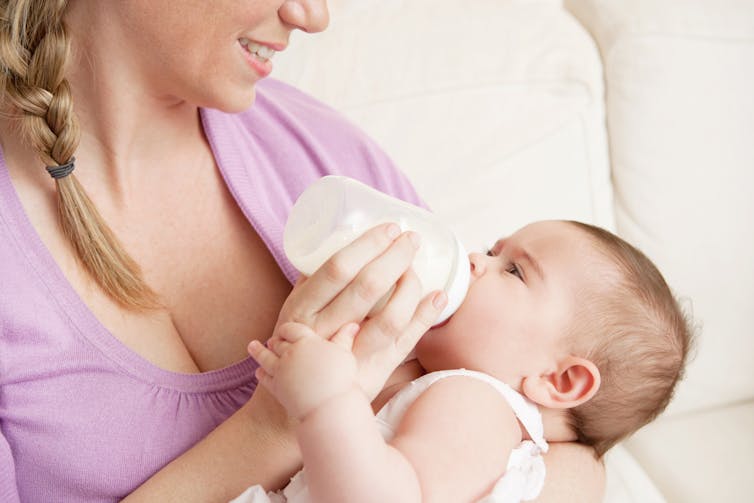The Dangers of Baby Bottle Propping
Bottle propping is a dangerous practice that goes back years. But it is now receiving increased attention as society tries to sell a “solution” for everything.
Feeding a baby with a bottle resting upright against something allows the milk to flow without the need for parental hands. And over the last few years, numerous devices that essentially make feeding a baby a hands free activity have flooded the market. Promoted as enabling parents to get a break from the proposed monotony of caring for a baby, they sell a solution that could be deadly.
Tragically, bottle propping can be fatal. Young babies may not have the head control or strength to move away from the flow of the milk that is being aided by gravity. Quite simply they can choke to death as they cannot escape from the milk, or inhale it as the bottle becomes displaced.
There is also the very real risk that babies simply end up consuming too much milk if it keeps flowing. Research has shown how babies take more milk from a bottle than they do when they breastfeed (one reason why bottle fed babies can be at a higher risk of being overweight) and this increases if they are encouraged to take more – as a propped bottle would “encourage” them to do.
Yes, an older baby might be able to move their head away, but at what stage? When they’ve had enough? Or when they really can’t stand any more? Small extra amounts of milk every day matter. Those few extra calories can turn into extra grams and pounds over the months. And encouraging a baby to keep feeding when they are full can also interfere with their ability to control their appetite later on.
Then there is the inescapable fact that having a bottle propped into your mouth when you can’t remove it can’t be the nicest feeding experience. Feeding is about so much more than nutrition. Holding a baby warm and close while being fed is a big part of them feeling secure and loved. It’s no coincidence that the sight range of newborn babies is pretty much perfect to reach their parents eyes at the angle that they would be held for a feed. Skin to skin contact is ideal when possible during feeds, but just the fact that the baby is being fed by a human being increases oxytocin, helping calm them and create general all round lovely feelings.
And no, you don’t need to stare endlessly into a baby’s eyes at every feed, but there is a vast gulf between that and not even holding a baby.


